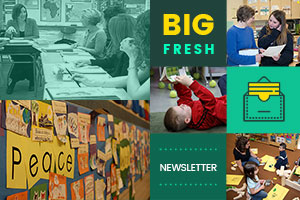Things do not pass for what they are, but for what they seem. Most things are judged by their jackets.
Baltasar Gracián
Last fall I had the pleasure of hearing Michelle Obama speak. At one point, she talked about the challenges of parenting teen girls. She recalled how both of her daughters begged her to allow them to host a slumber party with their friends on their last night in the White House. “Really?!” was Michelle’s response. “You do realize that everyone has to be out the next morning by 10 a.m. sharp? Because the Trumps are coming. They are moving in whether you and your friends are ready or not.”
She then recounted the crazy-busy next morning with her girls and their friends dawdling over breakfast and reminiscing, as all the while Michelle watched the clock and became ever more frantic. “I was hugging girls, kissing them goodbye, and shoving them out the door as fast as I could, thinking, And good luck getting through THAT security perimeter!” She shed a few tears herself wondering when she would see some of the girls again, but quickly brushed them aside and rushed through her hair and makeup routine. “My biggest worry was that a worldwide audience would see me looking like I’d been crying for different reasons,” she explained.
I can still picture Michelle O in a maroon dress that day, her hair pulled back severely and not so neatly, her makeup far less polished than usual. Little did any of us know she was having a typical mom-of-teens moment on a not-so-typical day, rushing to her responsibilities after an exhausting night.
Often when students surprise us with their appearance or actions (and not in a good way), our assumptions about what is going on are wrong. We see everything through the prism of our day, our classrooms, or our experiences with them. Whenever someone acts in a way that is unexpectedly harsh or negative, I try to take a deep breath and remember it might not be about me at all. “What’s going on? How can I help?” are words that can be hard to say when your first response is to be offended. But the questions are usually the best starting point to get at whatever is happening outside school that is making things hard inside school. As Ruth Ayres writes, “Our classrooms may be the last place where healing is possible for some students.” The healing can start only when we get past appearances to the heart of the problem.
This week we look at classroom talk. Plus more as always — enjoy!
Brenda Power
Founder, Choice Literacy
Free for All
[For sneak peeks at our upcoming features, quotes and extra links, follow Choice Literacy on Twitter: @ChoiceLiteracy or Facebook: http://www.facebook.com/ChoiceLiteracy or Pinterest: http://pinterest.com/choiceliteracy/]
Tara Barnett and Kate Mills help young writers move away from seeing editing as “adding more details,” and toward developing more specific language for the revision process:
http://www.choiceliteracy.com/articles-detail-view.php?id=2407
Here’s a fun notetaking strategy to try. Ellie Gilbert records snippets of conversation from Katie Doherty’s students, and then uses them in a debrief session to discuss student strengths, needs, and next steps:
http://www.choiceliteracy.com/articles-detail-view.php?id=1166
For Members Only
Melanie Meehan shares questions and reflection prompts to make the “turn and talk” strategy more effective:
http://www.choiceliteracy.com/articles-detail-view.php?id=2938
In this week’s video, Gigi McAllister presents a guide to her fourth-grade students to improve talk in reading trios:
http://www.choiceliteracy.com/articles-detail-view.php?id=2698
Andrea Smith uses the “compass points” strategy to provoke better whole-class discussions and reflection during read alouds:
http://www.choiceliteracy.com/articles-detail-view.php?id=2947
Tara Barnett and Kate Mills conclude their series on independent projects with advice on how to handle issues that often crop up as students design and work through writing their projects:
http://www.choiceliteracy.com/articles-detail-view.php?id=2930
In an encore video, Katrina Edwards preps her students for lunchtime chats with classmates to foster more social and conversation skills:
http://www.choiceliteracy.com/articles-detail-view.php?id=2722
That’s all for this week!



